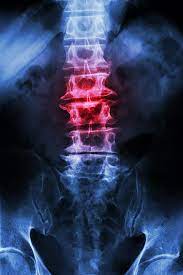
Spondylosis: Causes, Symptoms, and Treatment
Spondylosis refers to the natural degeneration of the spine due to aging, often affecting the cervical (neck), thoracic (mid-back), or lumbar (lower back) regions. It is also known as spinal osteoarthritis and can cause pain, stiffness, and nerve-related symptoms.
Types of Spondylosis
- Cervical Spondylosis (Neck) – Affects the cervical spine, causing neck pain, headaches, and nerve compression.
- Thoracic Spondylosis (Mid-Back) – Less common, but can cause stiffness and pain in the upper back.
- Lumbar Spondylosis (Lower Back) – Affects the lower spine, leading to lower back pain and potential nerve-related symptoms (sciatica).
Causes of Spondylosis
- Aging: Natural wear and tear on the spine’s bones, discs, and ligaments.
- Herniated or Degenerative Discs: Loss of disc flexibility and cushioning between vertebrae.
- Bone Spurs (Osteophytes): Extra bone growth that can press on nerves.
- Repetitive Stress or Poor Posture: Long-term strain from work, sports, or bad posture.
- Injury or Trauma: Past injuries can accelerate spinal degeneration.
- Genetics: Family history of spine problems may increase the risk.
Symptoms of Spondylosis
- Pain & Stiffness: Common in the affected spinal area (neck, mid-back, or lower back).
- Nerve Compression Symptoms:
- Cervical Spondylosis: Numbness, tingling, or weakness in the arms and hands.
- Lumbar Spondylosis: Sciatica, leg pain, or weakness in the legs and feet.
- Reduced Mobility: Difficulty bending, twisting, or turning the neck or back.
- Headaches (Cervical Spondylosis): Due to nerve irritation in the neck.
Diagnosis
- Physical Examination: Evaluating range of motion, reflexes, and nerve function.
- X-rays: Checking for bone spurs or degenerative changes.
- MRI or CT Scan: Detecting nerve compression, disc herniation, or spinal cord involvement.
- Electromyography (EMG): Assessing nerve function.
Treatment Options
1. Non-Surgical Treatments
- Medications:
- Pain relievers (NSAIDs like ibuprofen, acetaminophen).
- Muscle relaxants (for spasms).
- Corticosteroid injections (for severe inflammation).
- Physical Therapy:
- Stretching and strengthening exercises to improve posture and mobility.
- Manual therapy for pain relief.
- Lifestyle Changes:
- Maintaining a healthy weight.
- Proper ergonomics at work.
- Low-impact exercises (swimming, walking).
- Heat & Cold Therapy:
- Heat packs for stiffness, ice packs for inflammation.
2. Surgical Treatments (Severe Cases)
Surgery may be needed if there is severe nerve compression, spinal instability, or persistent pain. Options include:
- Laminectomy: Removing part of the vertebra to relieve pressure.
- Discectomy: Removing a herniated disc pressing on nerves.
- Spinal Fusion: Fusing two vertebrae to stabilize the spine.
Prevention & Long-Term Management
- Maintain Good Posture: Avoid slouching, especially during long sitting hours.
- Regular Exercise: Strengthens the core and back muscles to support the spine.
- Avoid Heavy Lifting: Use proper techniques to prevent strain.
- Quit Smoking: Smoking accelerates disc degeneration.
When to See a Doctor
Seek medical attention if you experience:
- Severe, persistent pain that doesn’t improve with rest.
- Numbness, tingling, or weakness in the limbs.
- Loss of bladder or bowel control (could indicate a serious condition like cauda equina syndrome).

